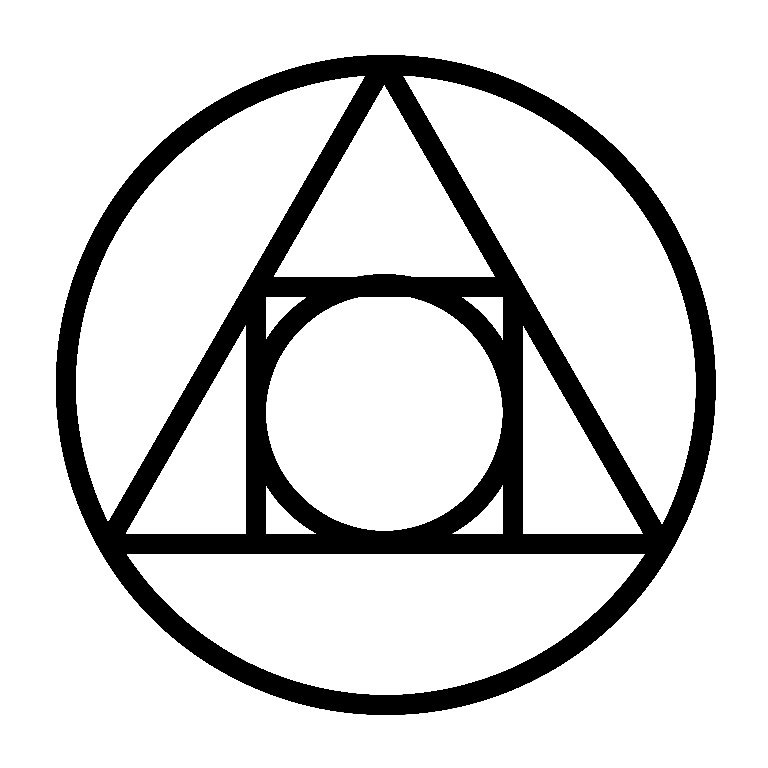The Alchemical Symbol for Water

The Alchemical Symbol for Water
Origins and Development
The symbol for Water (🜄) — a downward-pointing triangle — descends from the Greek elemental diagrams transmitted by Empedocles (5th century BCE) and Aristotle (4th century BCE).
It embodies the natural motion of water: downward flow, receptivity, and cohesion.
The triangle’s inversion relative to Fire’s upright form (🜂) expresses polarity — the cooling, passive complement to Fire’s heat and expansion.
The emblem entered Western alchemical manuscripts through late-Hellenistic Hermetism and medieval Latin translations of Aristotle’s Meteorologica.
By the 15th century, the symbol became standardized in the Pseudo-Geber corpus and Paracelsian diagrams, denoting both the elemental Water and the philosophical solvent of the Work.
Philosophical and Symbolic Meaning
Water represents the principle of dissolution, the materia prima in flux.
To the alchemist, it is not only rain or river water but the universal menstruum — the mysterious liquid capable of dissolving metals and washing away impurity.
This idea evolved into the search for the alkahest, a solvent said to reduce all matter to its first essence.
Key attributes across classical sources:
-
Empedocles: cold + wet; vehicle of life and decay alike.
-
Aristotle: passive element, dominated by form-receiving capacity.
-
Paracelsus: the moist principle that mediates Mercury and Sulfur.
-
Khunrath: baptismal water, cleansing both metal and soul.
In spiritual readings (e.g., Splendor Solis), Water signifies the unconscious or the soul’s reflective faculty—but always grounded in the literal process of washing, distillation, and condensation.
Role in the Great Work
Water governs the operations of dissolution and purification.
In the laboratory:
-
It corresponds to solution, fermentation, and circulation in the vessel.
-
Vapors condense and fall back as “philosophical rain,” repeating Nature’s cycle.
-
The “philosophical sea” or “mare nostrum” is the medium in which the Stone’s seed is conceived.
Practically, the alchemist observed water’s role in cooling fire, carrying volatile spirits, and reflecting light — all metaphors for tempering passion with understanding.
Historical Citations
-
Basil Valentine, Triumphal Chariot of Antimony (1604):
“Water is the mother of metals, softening the Earth that it may bring forth.” -
Sendivogius, New Chemical Light (1605):
“Our water is not common water but the vapor of the heavens made visible.” -
Paracelsus, Archidoxes of Magic (1527):
“In water lies the spirit of Mercury; through it the body is made volatile.”
These testimonies identify Water as both material solvent and spiritual mediator, the indispensable partner of Fire.
Connections to Other Works
In Deciphering the Method, Water corresponds to the solve phase — the act of dissolution that precedes coagulation.
In The Book of Aquarius, the author insists the Stone forms through “natural moisture,” echoing classical notions of Water as Nature’s womb.
The R.A.M.S. Library of Alchemy preserves several 17th-century sigils equating the triangle of Water with the alchemist’s “Secret Fire,” showing that the opposition between fire and water was meant to be reconciled, not resisted.
Symbolic Summary
-
Shape: downward triangle (🜄)
-
Elemental quality: cold, moist, receptive
-
Principle: dissolution, purification, fertility
-
Planetary analogue: Moon
-
Laboratory analogue: solvent, dew, distillate
-
Psychological analogue: intuition, adaptability, cleansing insight
Water is the maternal matrix of transformation, the field where substance forgets its boundaries and becomes one again.
